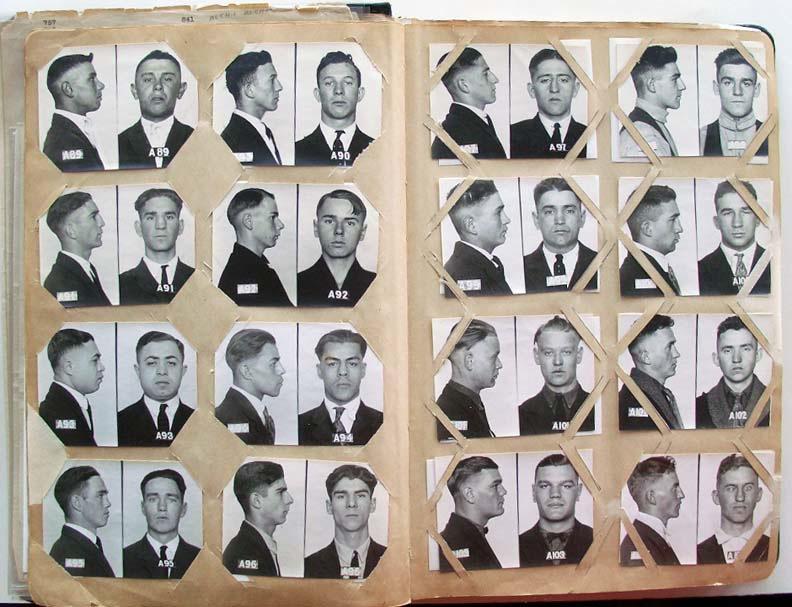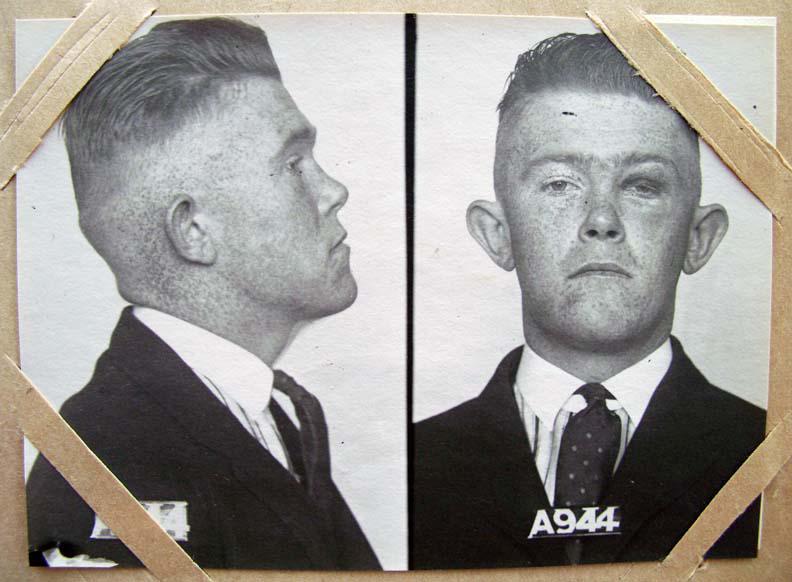The Vault is Slate’s history blog. Like us on Facebook, follow us on Twitter @slatevault, and find us on Tumblr. Find out more about what this space is all about here.
The two-page spread below comes from an album that contains images of almost 1,100 boxers active in San Francisco between World War I and the 1930s. The album is part of the Graphic Arts Collection at Princeton University.
San Francisco was a boxing town from the time of the Gold Rush, as the sport entertained crowds of men far from home and starved for distraction. As boxing became more organized in the late 19th and early 20th centuries, the city’s athletic clubs trained many champions. In her post on the album, Julie Mellby, Graphic Arts librarian at Princeton, writes that the city even had a grandiose nickname: “The Cradle of Fistic Stars.”
The Olympic Club, which created this album, was founded in 1860. The club often hosted boxing matches and championships and was the home of the first Olympic Heavyweight Boxing Champion, Samuel Berger.
Despite carrying a vague sheen of the disreputable, pugilism was popular with the club’s membership, as an 1896 article in the San Francisco Call testified:
Although boxing is frowned upon by a large percentage of the higher class of citizens it is nevertheless a fact that fisticuffs are the only indoor sport that is well patronized by the members of the Olympic Club.
For this album, the boxers were photographed from the side and from the front, in classic mugshot configuration. This photographic convention first came into widespread use in law enforcement in the 1880s, with the San Francisco Police Department being an early adopter.
Sandra Phillips, senior curator of photography at SFMOMA who organized an exhibit on the history of policing and photography in 1997, told me she thought it was unusual for an organization to use mugshots to photograph people who weren’t being recorded as criminals.
Absent more information, we don’t know why the club would have “booked” its boxers this way for posterity. Was the paired side-and-front view simply a good way to capture their bruises, shiners, and puffy cheeks? Or was somebody making a joke about the kinship between pugilism and violent crime?

Olympic Club of San Francisco, Album of Boxers of San Francisco. Graphic Arts Collection, Rare Books and Special Collections, Firestone Library, Princeton University.

Olympic Club of San Francisco, Album of Boxers of San Francisco. Graphic Arts Collection, Rare Books and Special Collections, Firestone Library, Princeton University.

Olympic Club of San Francisco, Album of Boxers of San Francisco. Graphic Arts Collection, Rare Books and Special Collections, Firestone Library, Princeton University.

Olympic Club of San Francisco, Album of Boxers of San Francisco. Graphic Arts Collection, Rare Books and Special Collections, Firestone Library, Princeton University.